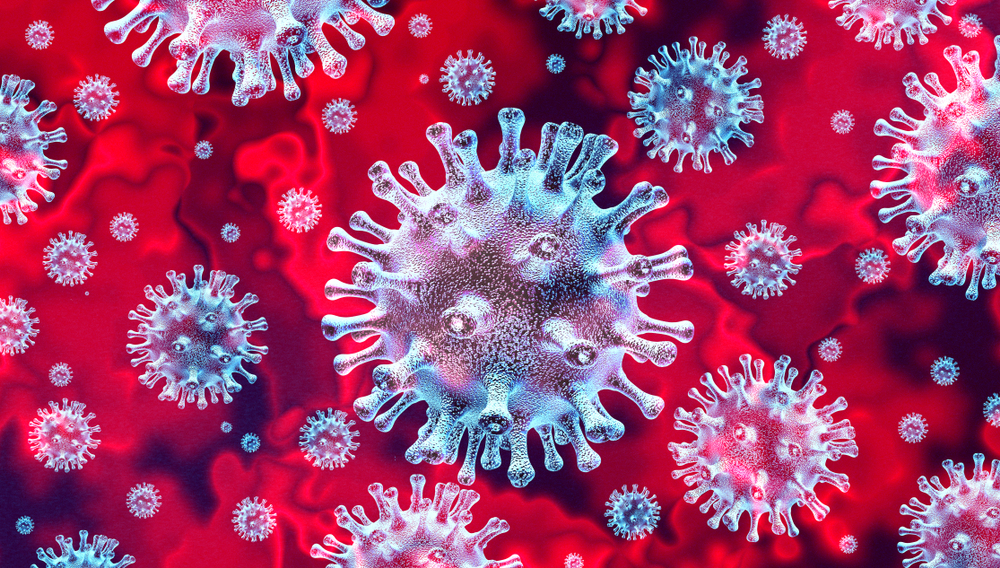Scientists have demonstrated the efficacy of photocatalyst RENECAT™ against severe acute respiratory syndrome coronavirus 2 (SARS-CoV-2), eliminating it from surfaces under visible light. The new study's findings will inform the development of new, effective techniques for preventing transmission of the Coronavirus via contact with contaminated surfaces. The study was published on the bioRxiv* preprint server.

Image Credit: Lightspring/Shutterstock.com
Decontaminating Surfaces Presents an Opportunity to Stop Coronavirus Spread
Research teams worldwide are working to develop effective strategies to prevent the spread of the SARS-CoV-2 virus. According to the World Health Organization (WHO), deaths due to the virus reached an estimated 1,178,475 deaths at the end of October 2020. Countries across the globe continue to implement a plethora of restrictions to everyday life to prevent new cases, which now exceed 44 million.
There is a critical need for effective methods of preventing transmission of the virus suitable for widespread adoption. Given that the two main routes to transmission are through contact with infected humans or contact with contaminated surfaces, approaches to tackle the speed of the virus have focused on addressing these two scenarios.
In terms of methods to decontaminate surfaces, the market is currently flooded with disinfecting products and biocidal agents that are mainly used in healthcare settings. However, while there is no shortage of products that aim to destroy traces of SARS-CoV-2 from surfaces, their effectiveness heavily depends on numerous factors. There are also limited studies to prove the efficacy of such products in deactivating the virus.
Light-Activated Disinfectants for COVID-19
Photocatalysts are materials that absorb light, increase the molecules' energy level, and allow a chemical reaction to occur. These chemical reactions that occur in the presence of light can decompose substances and have been used for several years to eradicate bacteria, fungi, and viruses. The benefits of using such substances as cleaning materials are that they are environmentally friendly, sustainable, and have been proven to be effective.
They present an attractive option as a preventative strategy against the spread of SARS-CoV-2. However, the efficacy of photocatalysis at eradicating SARS-CoV-2 had not been investigated. This inspired a team of researchers from the National Institute of Food Sciences and Toho University School of Medicine, both in Japan, to research the plausibility of using such materials to prevent Coronavirus's spread via contact with contaminated environments.
The team evaluated the virucidal activity of a photocatalyst, known as RENECAT™, against SARS-CoV-2 in conditions where the material was exposed to visible light. RENECAT™ is developed by Toshiba and is designed to eliminate a range of viruses, bacteria, and even odors. The titanium dioxide photocatalyst works under both sunlight and indoor lights. It does not require UV radiation and has been proven to be effective against many bacteria and viruses strains.
The current study demonstrated that the RENECAT™ photocatalyst is also effective at eradicating the SARS-CoV-2 virus. The study investigated how effective the RENECAT™ photocatalyst was under various conditions at inactivating the SARS-CoV-2 virus under exposure to visible light. The team coated glass slides with the photocatalyst, introduced SARS-CoV-2 to the slides, and exposed them to visible light.
The results showed that the viral activation decreased from 5.93±0.38 logTCID50/ml to 3.05±0.25 logTCID50/ml following exposure to visible light. The duration of light exposure required for the photocatalyst to reach this efficacy was six hours, and the test conditions showed that this was effective in ambient temperatures of 20°C.
Control tests showed that without exposure to light or coating the slides with the photocatalyst, the virus remained active and retained its stability. Further analyses revealed the decreased levels of spike protein present on the virus's surface following treatment with the photocatalyst and light exposure. The data supports the use of photocatalysts in effective decontamination techniques for preventing the spread of SARS-CoV-2 via contact with contaminated surfaces.
Advancing Technology to Prevent SARS-CoV-2 Cases
The study's findings will likely inform future development of methods used to deactivate the SARS-CoV-2 virus on indoor surfaces, reducing the spread of infection and decreasing the number of cases of infection and even the number of deaths attributed to SARS-CoV-2 infection.
*Important notice
bioRxiv publishes preliminary scientific reports that are not peer-reviewed and, therefore, should not be regarded as conclusive, guide clinical practice/health-related behavior, or treated as established information.
References and Further Reading
Uema, M. et al. (2020) Photocatalyst under visible light irradiation inactivates SARS-CoV-2 on an abiotic surface. bioRxiv. https://doi.org/10.1101/2020.11.01.364364
Disclaimer: The views expressed here are those of the author expressed in their private capacity and do not necessarily represent the views of AZoM.com Limited T/A AZoNetwork the owner and operator of this website. This disclaimer forms part of the Terms and conditions of use of this website.